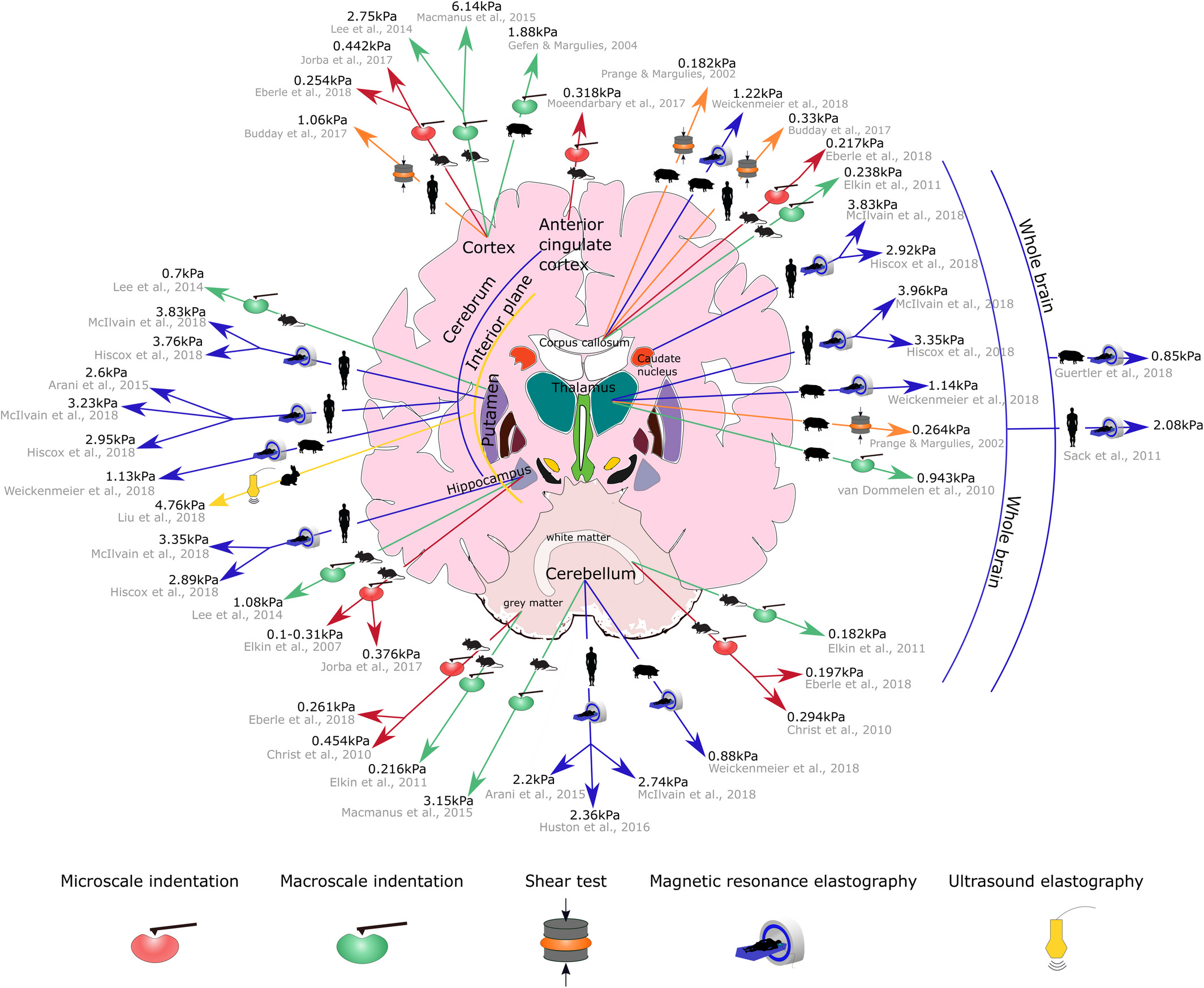What is the most adequate material description of human brain matter?
There have been many attempts to model the human brain through constitutive modeling, such as using Mooney-Rivlin, Gasser-Ogden-Holzapfel (Giordano 2017), and even as porous media models (Józsa 2017). Despite best efforts in constitutive modeling and parameter collection, there seems to be a consensus that the brain is not being adequately described due to its deep complexity and variability in parameter collection, see figure (Hall 2020). Further, literature has focused on the application of head injury, rapid accelerations, and impacts (Giudice 2018) which place the brain in an entirely foreign loading regime, relative to it's day-to-day loading which is cardiac and respiratory-driven.
Primary Questions: What is currently accepted as the most accurate description of the human brain under day-to-day cardiac-driven loading? Please provide descriptions for each of the macroscale brain tissue types (White matter, gray matter) as well as any known techniques to describe the cerebrospinal fluid in the ventricles and sub-arachnoid space.
Optional questions: (1) Have there been any accurate and repeatable descriptions of the material property differences between functional brain regions, such as those delineated by the brainCOLOR protocols? (2) Have there been any models to account for local tissue degradation (lesions, ischemia, hemorrhage) or temporal changes (aging)?
Figure (Hall 2020): Variations in parameter measurement across species, modalities, and brain regions.

